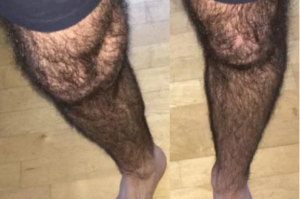The following is the introduction of the article titled: Pericardial, pleural effusion and anasarca: A rare complication of low-dose oral minoxidil for hair loss
Authors: Ncoza C. Dlova, MBChB, PhD, Tarryn Jacobs, MBChB, and Satish Singh, MBChB
“INTRODUCTION
Topical minoxidil has been used for many years in the treatment of androgenic alopecia and other hair disorders. Although the mechanism of action of topical minoxidil is poorly understood, animal studies have shown that it affects the hair growth cycle by shortening the telogen phase and prolonging the anagen phase.1,2 Lately, there has been growing evidence to support successful use of low-dose oral minoxidil (LDOM) in the treatment of various types of alopecia. The dosing regimens range from 0.25 to 5 mg daily to twice daily, with side effects reported to be dose dependent.”
The presented Pericardial Effusion occurred 3 weeks after starting the low-dose oral minoxidil. The woman presented with significant swelling in her feet and eventually elsewhere. A Pericardial Effusion is a condition where fluid accumulates around the heart, inside the sac (pericardium) that surrounds the heart. Fluid in this space will restrict blood flow to the heart and fluid back up in the body. Significant swelling of the feet and anasarca (a generalized swelling of many body parts) was clearly a warning that brought this woman to a doctor. She was admitted to the hospital, treated with diuretics, and stopped the oral minoxidil, all of which normalized her state of health, so she was discharged from the hospital on the 5th day.
WARNING: People taking oral minoxidil or even high-dose topical minoxidil might develop the symptoms described above. Always seek medical attention when a change in your health to this magnitude appears, especially if you are taking oral minoxidil.
Ref: JAAD Case Reports 2022;28:94-6., 2352-5126, 2022 by the American Academy of Dermatology, Inc. Published, by Elsevier, Inc. This is an open-access article under the CC BY-
NC-ND license (http://creativecommons.org/licenses/by-nc-nd/4.0/). https://doi.org/10.1016/j.jdcr.2022.07.044

